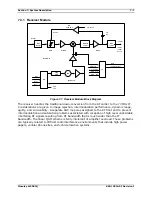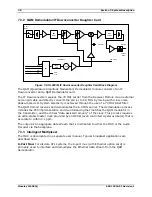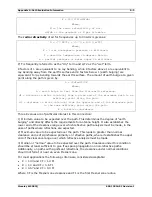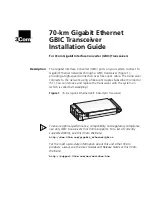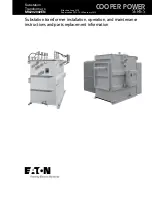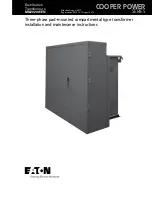
Appendix A: Path Evaluation Information
A-1
Moseley SL9003Q
602-12016-01 Revision J
A.
Path Evaluation Information
A.1 Introduction
Please visit www.moseleybroadcast.com and click on support for online Path Evaluation
resources or simply telephone Moseley Customer Services for help in this area.
A.1.1 Line-of-Sight
For the proposed installation sites, one of the most important immediate tasks is to
determine whether line-of-sight is available. The easiest way to determine line-of-sight is
simply to visit one of the proposed antenna locations and look to see that the path to the
opposite location is clear of obstructions. For short distances, this may be done easily with
the naked eye, while sighting over longer distances may require the use of binoculars. If
locating the opposing site is difficult, you may want to try using a mirror, strobe light, flag,
weather balloon or compass (with prior knowledge of site coordinates).
A.1.2 Refraction
Because the path of a radio beam is often referred to as line-of-sight, it is often thought of
as a straight line in space from transmitting to receiving antenna. The fact that it is neither
a line, nor is the path straight, leads to the rather involved explanations of its behavior.
A radio beam and a beam of light are similar in that both consist of electromagnetic energy;
the difference in their behavior is principally due to the difference in frequency. A basic
characteristic of electromagnetic energy is that it travels in a direction perpendicular to the
plane of constant phase; i.e., if the beam were instantaneously cut at right angle to the
direction of travel, a plane of uniform phase would be obtained. If, on the other hand, the
beam entered a medium of non-uniform density and the lower portion of the beam traveled
through the denser portion of the medium, its velocity would be less than that of the upper
portion of the beam. The plane of uniform phase would then change, and the beam would
bend downward. This is refraction, just as a light beam is refracted when it moves through a
prism.
The atmosphere surrounding the earth has the non-uniform characteristics of temperature,
pressure, and relative humidity, which are the parameters that determine the dielectric
constant, and therefore the velocity of radio wave propagation. The earth’s atmosphere is
therefore the refracting medium that tends to make the radio horizon appear closer or
farther away.
A.1.3 Fresnel Zones
The effect of obstacles, both in and near the path, and the terrain, has a bearing on the
propagation of radio energy from one point to another. The nature of these effects depends
upon many things, including the position, shape, and height of obstacles, nature of the
terrain, and whether the effects of concern are primary or secondary effects.
Primary effects, caused by an obstacle that blocks the direct path, depend on whether it is
totally or partially blocking, whether the blocking is in the vertical or the horizontal plane,
and the shape and nature of the obstacle.
The most serious of the secondary effects is reflection from surfaces in or near the path,
such as the ground or structures. For shallow angle microwave reflections, there will be a
180° (half wavelength) phase shift at the reflection point. Additionally, reflected energy
travels farther and arrives later, directly increasing the phase delay. The difference in
distance traveled by the direct waves and the reflected waves, expressed in wavelengths of
the carrier frequency, is added to the half wavelength delay caused by reflection. Upon
arrival at the receiving antenna, the reflected signal is likely to be out of phase with the
Summary of Contents for Starlink SL9003Q
Page 86: ...5 22 Section 5 Module Configuration Moseley SL9003Q 602 12016 01 Revision J ...
Page 90: ...6 4 Section 6 Customer Service Moseley SL9003Q 602 12016 01 Revision J ...
Page 110: ...A 10 Appendix A Path Evaluation Information Moseley SL9003Q 602 12016 01 Revision J ...
Page 118: ...D 2 Appendix D Microvolt dBm Watt Conversion 50 ohms Moseley SL9003Q 602 12016 01 Revision J ...











